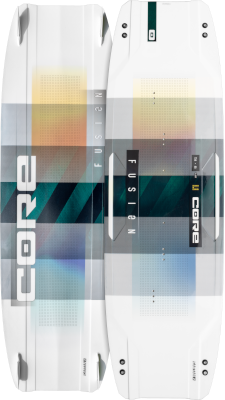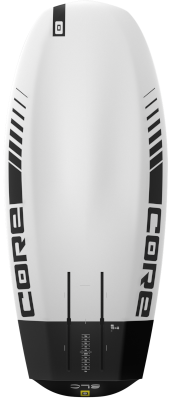In kiteboarding there are 3 types of boards: twintip, directional and hydrofoil boards.
twintip
Twintip boards use pads and straps to keep your feet on the board. They can be ridden from left to right and from right to left. Most people start with a twintip board because of the pads and straps. Twintips are easy to ride and tough. The larger your twintip, the easier it will be to start and get planing. Once you start jumping and riding toeside most people change to a smaller board. Smaller boards are easier for turning and for generating 'pop' for jumping.
directional board / surfboard
Directional boards are very similar to surfboards. The construction is stronger because the kiteboard directional board has to withstand a much higher pressure than a surfboard. Directional boards use a pad at the back of the board and wax or a pad on the middle section and top of the board. There are different kind of directional boards for different types of waves.
foil board
foil boards are similar to freestyle directional boards in shape. The foil board is connected to a hydrofoil that is used lift the board and rider out of the water. Once out of the water foil boards have a very low resistance, they are ideal if you want to start kiting when there isn't enough wind for a twintip.
Carvedボードについて
Carved TWINTIPのモデル
Core ボードについて
Core TWINTIPのモデル
Core サーフボードのモデル
Core ファイルボードのモデル
terminology twintip boards
- deck: this is the board itself
- pads: are screwed into the board and is what your feet rest on.
- straps: straps are connected to the pads to keep your feet on the pad.
- fins: fins are normally mounted on the four corners of the board.
- rail: the edge of the board.
- rocker: this is the curve of the board
- channel: these are grooves into the bottom of your board to guide the water.
- grab handle: a handle to carry your board or to grab it when doing tricks where you take your feet out of the straps.
- size: the size of a twintip is expressed in length x width. For example a 135x40 board means a board that is 135 cm long and 40 cm wide.
terminology directional boards
Directional boards are very similar to surfboards. Directional boards, surfboards, waveboards are different names for the same thing. A directional kiteboarding board is different from a normal surfboard. The kiteboarding surfboards are build heavier to withstand the higher pressure and stresses that are generated by the kite.- board
- rail
- tail
- fins
- finbox
- kicker
- pad
- strap
terminology hydrofoil boards
- board
- mast plate
- mast
- fuselage
- wing
- stabilizer










